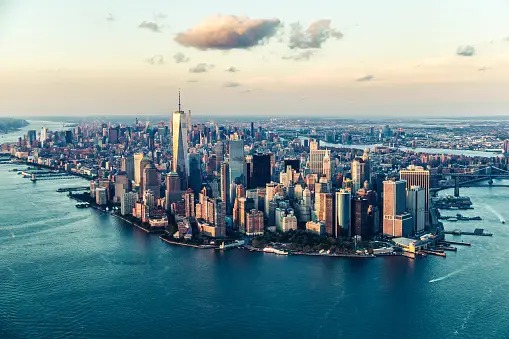We live in one of the ages of great cities, and yet for me, it feels like this particular age is nearing a conclusion. If I am correct in my assessment, this means a lot of questions, opportunities, and possible threats. If I am wrong, this is still an interesting questions to discuss.
Why does it pay off to live in a great city?
History is full of great cities. This is a cool list of historical great cities. From Uruk 6000 years ago to Tokyo today, great cities inspire historians as well as contemporaries. Very few of the historical great cities are still active, and probably very few of the cities great today will remain great for more than a hundred years. The reason is very simple. Great cities require extremely expensive and complex logistics when much smaller cities could deliver similar services.
So, why does it pay off to build a great city? The answer is usually unique specialized jobs. Great cities had enough masters in each guild to produce unique luxury objects that require an incredible amount of highly specialized work. The bureaucratic apparatus of large empires usually consume many luxury objects, so great cities typically are located in administrative centers. And they also attract trade routes, as they are distribution centers of luxury objects.
Why do we have so many megacities?
The main reason today for people to choose megacities is access to a huge number of jobs. Some of these jobs are very elite, like investment banking. Other jobs are very old school like harbor and railroad workers. There are large research complexes and entertainment centers. And then there are people providing services to everybody else: cars, food, clothing, healthcare, and more.
The larger the city the faster people move and talk. And the citizens of megacities definitely work faster and play harder than their peers. Typically they also have very high salaries, to compensate for the very high prices of everything in the cities.
In large cities, everything is very expensive, primarily because real estates are expensive. Then because the salaries are higher. And also because the required infrastructures require unique engineering solutions.
Are megacities relevant?
Megacities were extremely relevant when they were manufacturing centers. There was a clear advantage to size, and thousands of workers used to do roughly the same job in highly competitive sweatshops. However, the aspects that make great cities so valuable become less attractive.
We may often work from homes – providing all kinds of online services. The heavy industry moved deep into the countryside, to use cheap real estate and electrical power for the machines. The services will soon become very much online, as it is cheaper to keep people working from their homes. Even education is getting more online elements with video courses. It is simply cheaper to live in a small town, with one hour commute from one of the great cities. And then as the middle class might move out, poor people may move into the megacities making them less attractive for capital investment and eventually ruining the infrastructure.
Does this really happen, or is it a future projection? Some processes happened when switching from industrial production to post-industrial service-oriented economy. For several decades some big cities like Detroit enjoy very bad reputation. Yet we can try to learn about birth and death of great cities from the entire human history. Let’s go back to history.
The act of a king
Usually, the construction of a great city is an act of a king. Some king decides to move his capital to a strategic area. The court follows the king, and the people making luxury products follow the court. Alternatively, an economic bonanza attracts trade routes, the salesmen get rich and creators of luxury products arrive.
Great cities usually are very well located. Typically they have access to see either a bay or at a turn of a river, approximately 2 days from its delta. This distance was actually measured by historians. It offers protection from muddy deltas as well as from pirates. Great cities get access to large amounts of clean water to drink, and to large fertile fields to feed their population.
Exponential growth
Great cities start relatively modestly, compatible to other cities of their time. And then something changes. The story is different in each city.
Some cities experience periods of exponential growth, due to the construction of aqueducts or the discovery of new agricultural methodologies. Other cities grow exponentially due to some industrial bonanza or massive immigration.
Beyond our understanding
Literally. Quite often we understand quite well how great cities came to be, but we do not understand why and how great cities disappear. 10000 years ago Jericho possibly was pillaged. Only the tower remained. Then 3500 years ago it was possibly destroyed in an earthquake, although the bible mentions a very different cataclysm. Great ancient cities in south America probably exhausted the food supply, possibly due to climate fluctuations. Uruk and later Ur was abandoned probably because the Euphrates River shifted its course. Thebes, Egypt declined for millennia till it became a small village. Something similar almost happened to Rome in early medieval times.
You will ask me if I am certain about it. I am not. Historians have only partial records and do a lot of guesswork. The true reason of the decline of the great cities may be complex. Like the Late Bronze Age collapse, which wiped out many ancient cities. It could be a combination of natural disasters, war, and a shift in trade routes.
How many great cities are there?
Usually, throughout history, there were about a dozen of great cities worldwide at any given time. Typically there were a couple of great cities in the middle east, a couple in china, and a couple in southeast Asia. Then there were periods with great cities in America and in Europe. For example, 6000 years ago there was a great city in Ukraine.
Initially, the great cities were just several thousands of citizens, then tens of thousands and then millions. Around two thousand years ago, there were several cities with approximately one million citizens. Alexandria (Egypt), Rome (Rome), Chang’an (China), and possibly Pataliputra (India). Today there are 512 cities with at least 1 million people, but only 31 megacities with more than 10 million citizens.
What limits the size of the megacities today? Primarily access to clean water, as 10 million citizens drink a lot. The resulting urban areas are monumental. Tokyo has almost 40 million citizens.
How old are current megacities?
Tokyo grew from a few thousand around 1500, to 1,000,000 by the early 1700s. Today it is the largest megacity. New Your and San Paolo were founded in 1600s and 1500s respectively. And yet, Delhi, India, the heart of numerous kingdoms and empires, has been inhabited continuously since at least the 600s BC.
The megacities are still growing despite their challenges, like water-system and crime. Moreover, they grow while rural areas of the relevant countries are getting depopulated. The reason is access to jobs. To imagine large cities losing their citizens we need to imagine giant economic changes.
Theoretical scenarios
Every scenario in which people flock out of great cities today is purely theoretical. I can think of several such scenarios. The most likely is the scenario where middle-class digital nomads move into suburban areas while being replaced by people who enjoy falling property prices and welfare. This is also one of the deepest fears of the people who live in the great cities. Something similar already happened in several cities in the 20th century.
A second, less likely scenario is a ghost-city scenario. In China, there are large cities that are there, but not really populated. The relevant real estate and facilities were sold on paper. There are no jobs in those cities, so people do not have the incentive to move in.
A simpler scenario involves shortages of critical resources, like drinking water in Mexico city. As a result, the city shrinks to the size supported by the existing infrastructures.
And yes, I can easily imagine a scenario of slow depopulation of cities, like Thebes (Egypt) and Rome (Italy) in the early middle ages, until the cities dwindle into villages. This scenario is likely, as both services and industry now do not need the unique centralized infrastructure of big cities.
What can we do?
I would like to put a question mark on the immense prices of tiny apartments in megacities. Quite possibly larger houses in “good” areas with one or two hours of a commute from the cities are a better investment.
It is also possibly the best time to visit the great cities as tourists: to capture their majestic atmosphere before possible deterioration.

